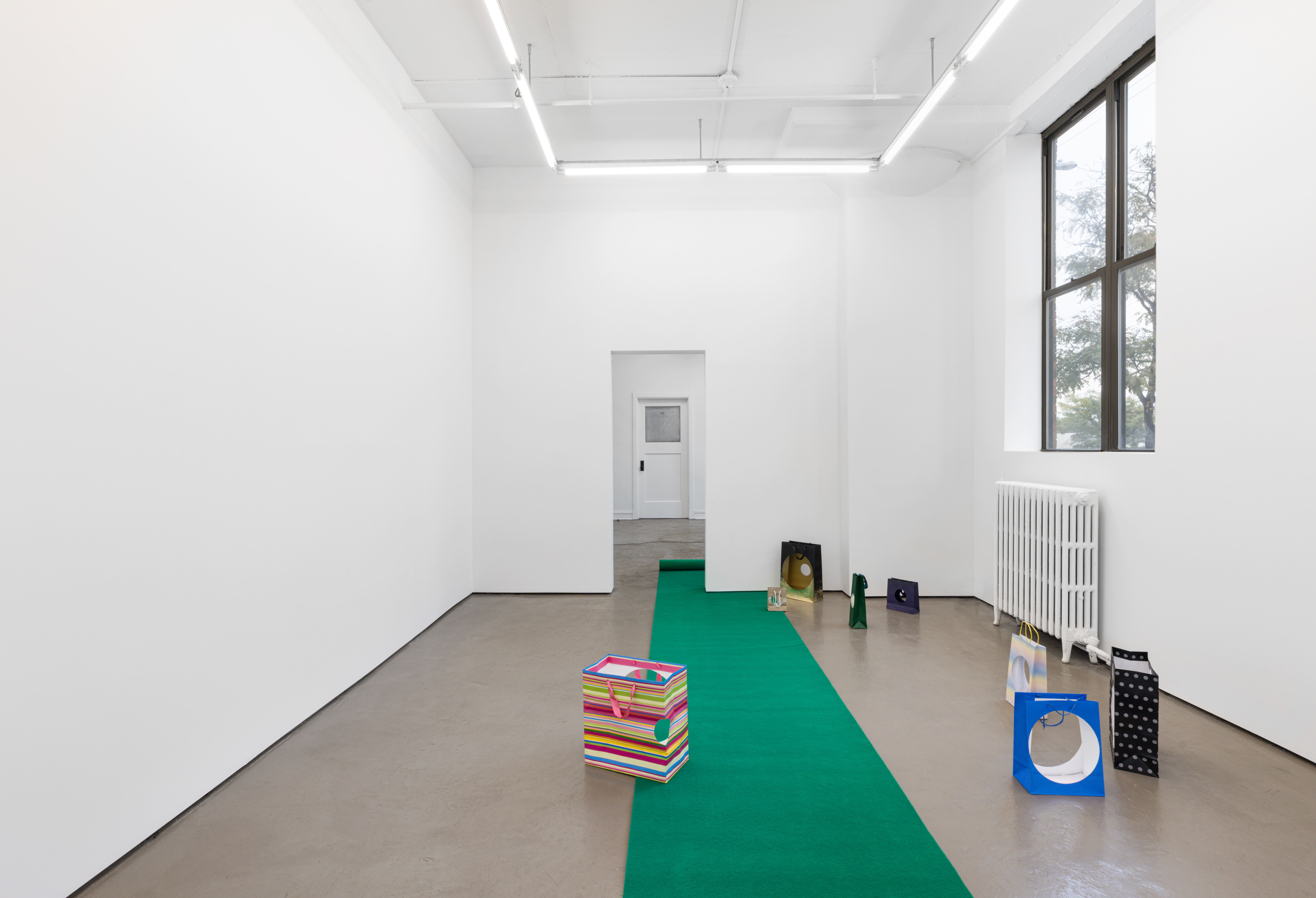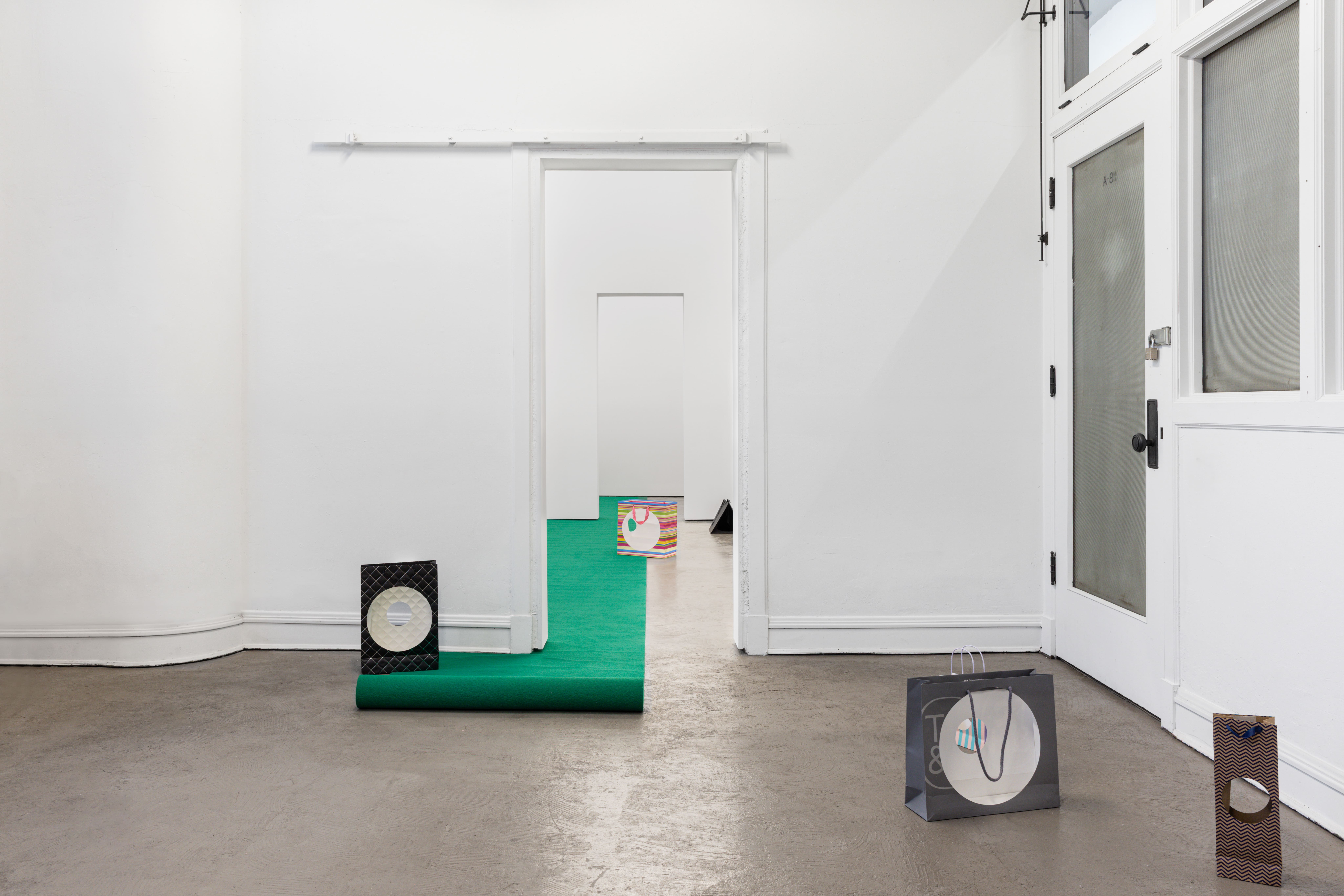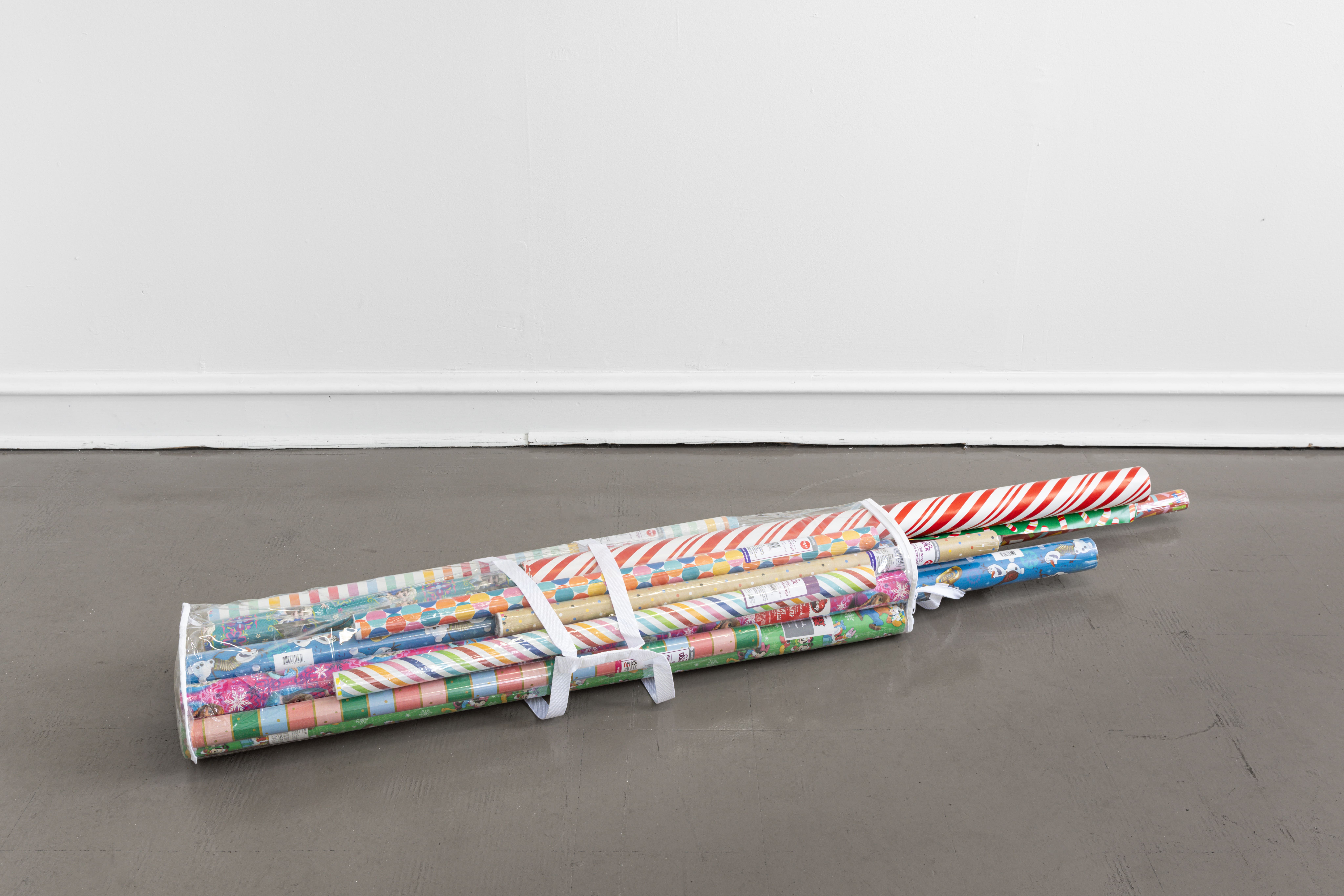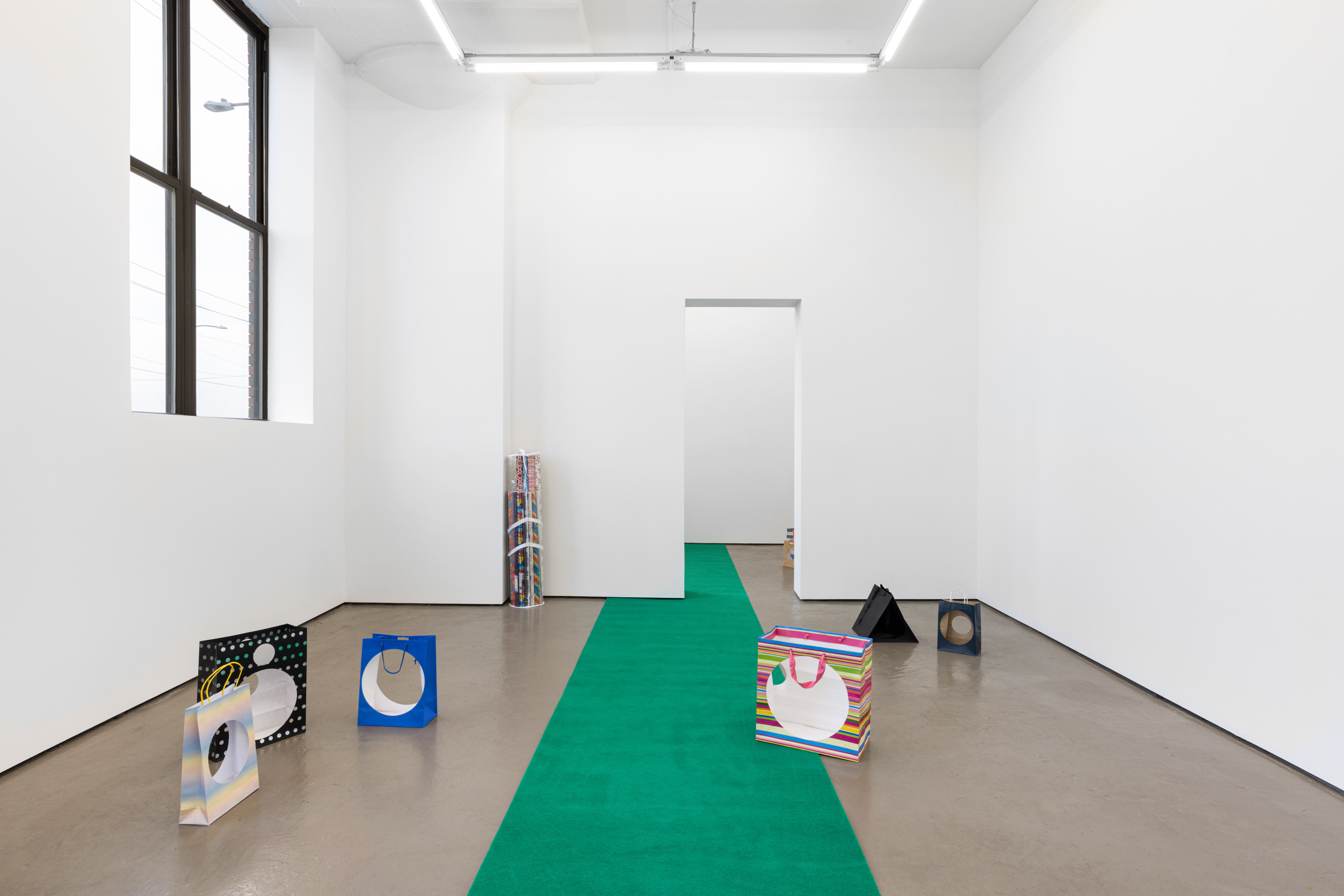
The materiality of this exhibition—I mean to say the different reference points in the medium and form of the sculptures that make up the two installations in
Sara MacKillop’s The Cutaway View—suggested a direction for this exhibition text: an interview in reverse. Answers preceding questions. A conversation discovered in a note on stationary paper left on a desk, a faxed office memo found after hours, or a back-and-forth with a bank teller using an archaic communication system of pneumatic tubes—air pushing plastic containers holding messages through a buried network of tunnels. The work isn’t this (though parts of it are tubular), but it does reference a type of exchange: an invitation to hold space and carry a conversation (with holes in it). Something is being deposited.
HR: How did you start making the bag pieces? Or what was the impetusfor this work?
SM: The bag pieces started by trying to extend a record sleeve into a bag. I cut a hole into a found shopping bag of a similar size to a record sleeve. The size of the hole was initially the same as the size and central position of the hole in a 12 inch record sleeve. The size and placement were then adapted to create 12 inch, 10 inch, and 7 inch holes that echoed the standard sizes of vinyl records. The logic of a vinyl record was then transferred to bags. I began cutting these holes in a variety of bags—branded bags, gift bags, flower bags, bags used for presentation, transportation, or advertising—and the size no longer only referenced a record sleeve.
HR: There’s an architectural quality to the bags: scale models from an avant-gardism like Metabolism scattered around the floor.
SM: Cutting holes in a bag fundamentally breaks the function of the object. A bag is used for storage or transportation but it can no longer work in that way; it is no longer a functional container. The hole works as an aperture or window and it reveals the interior structure of the bag wherein it starts to have a kind of architecture.
HR: And in the case of this exhibition, the work then directly interacts with the architecture of the building.
SM: Yes, exactly. In the upstairs gallery, the circles that were cut from the bags have become window stickers which mimic security decals on glass buildings that draw attention to the facade so people don’t walk into them. This looping is interesting to me when the removed circles that create the windows in the bags are then adhered to the windows upstairs. There are slight colour distortions from digitising these cut outs. This loss of fidelity along with the fact that the circles are displayed on windows that don’t require their functional use causes a confusion in communication.
HR: The window decals are like an ellipsis, an elongated pause, a warning, a reversal, a...hole...many holes, among the scattered bags in the downstairs gallery and this line of circles on the windows in the upstairs gallery. The pattern in these works resonate with another sculptural element in the exhibition: plastic wrapping paper holders full of 30 and 40 inch tall wrapping paper.
SM: The wrapping paper columns use a standardised store-bought storage system. The sculptures placement within the gallery space suggests bollards or pillars; security or architectural posts. The column in the upstairs gallery appears to have fallen with the wrapping paper dispersed from the container. These reference previous works where wrapping paper was organised to create a soft barrier in a gallery space.
HR: I appreciate this resonance among the separate materials and the unfurling that occurs with the placement or activation of the varying elements.
SM: Upstairs is a reimagining of an older wrapping paper piece using the parameters of what is available in the American consumer system and highlighting the slight differences in design and dimensions of standardised objects across different countries. In this case, a retail gift wrapping dispenser is attached to the wall and holding a monochromatic wrapping paper that has been unwound and then rewound so that the gridded recto side is visible. The color on the verso can be glimpsed in folds and through the slight transparency of the low GSM paper. Displayed on the wall at hanging level, the wrapping paper unfolds to the floor. The form of the roll itself is a container and references the roll from which the ill-fitting carpet downstairs came from; a sort of understanding between different materials.






